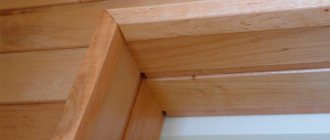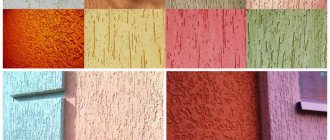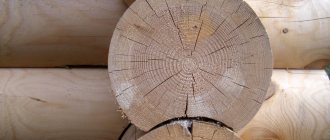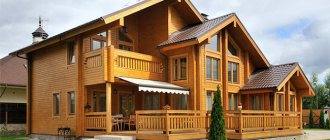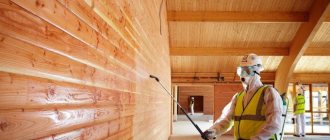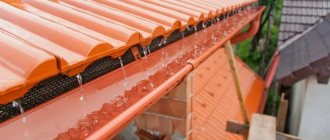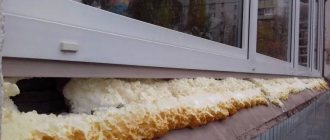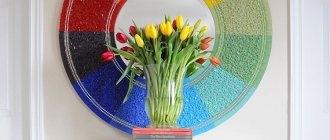In wooden house construction, jute rope has often become used for finishing the logs of private houses, cottages, and bathhouses made of timber or logs. The material is excellent for interior and exterior decoration of structures. From the article you will learn the features of insulating wooden houses with jute rope, the nuances of choosing a size, and methods of fastening. Jute rope has gained wide popularity due to its unique physical and decorative properties. Such insulation effectively protects the room from blowing, atmospheric influences, and emphasizes the natural beauty of wood. Moss, tow, and jute fiber are traditionally used as insulation. In combination with a rope, an excellent result is obtained.
Rope is used to fill horizontal and vertical joints of logs, upper and lower baseboards. Also, jute rope is used to wrap pillars, columns, and decorate beams, fences, stairs, window and doorways.
What is jute rope and what does it consist of?
Plant fibers are used to produce rope material. From the yarn (bobbins) obtained after processing the plants, ropes are obtained that are twisted together. Jute rope for finishing a log house has universal properties, which is why it has gained wide popularity in wooden house construction. This type of finishing is relatively inexpensive.
Initially, the cord was used exclusively to protect the seams between the crowns, but over time it began to be successfully used for decorative purposes. Today, a better material for external insulation and beautiful finishing cannot be found. You will learn how to choose a rope from natural material and attach it to a log house in this article.
Property of jute
Jute fiber is extracted from the stems of jute, a herbaceous plant belonging to the linden family. The growing area of jute is quite extensive; it is cultivated in Asia, Africa, Australia and America. India is one of the main suppliers of jute to the world market. In this country, jute fibers have been used to make fabrics and clothing since the 18th century.
Jute fibers are less elastic than flax, and the fabric they make is rough and tough, so jute is widely used as a raw material for the manufacture of ropes (twine, ropes) and packaging fabric (burlap).
Selection of jute rope
The market sells a cord with a diameter of 4-33 mm. But from an aesthetic point of view, a thin rope does not create the desired effect, and too thick a rope looks rude and spoils the appearance of the building. Therefore, it is best to finish the seams with jute rope of medium thickness. For wall insulation, a rope with a thickness of 10 to 22 mm is better suited, which covers the roof joint well. When choosing a decorative element, you need to pay attention to the diameter of the log. For small logs, a thin cord is better.
To decorate a log house, you can use different types of cords, but the traditional jute version is the most affordable and relevant. The natural material is made from a tropical plant that grows on plantations flooded with water. Since ancient times, people have woven ropes from it, which were highly durable and did not collapse under the influence of moisture and sunlight for many years.
Rope compactor is sold in large coils of 240 and 250 meters. The length in the coil depends on the thickness of the rope; the thicker it is, the fewer meters, which should be taken into account when calculating. But sometimes the manufacturer offers rope products on special plastic spools, in film packaging (10 and 15 meter lengths).
Today, sealing seams with jute rope in a log house is not only profitable, but also fashionable. The natural material matches the color of the log perfectly, therefore it is used as a decorative finish for the following elements of a wooden frame:
- skirting boards (upper and lower);
- interventional joints;
- pillars and columns.
This is an indispensable material for sealing the vertical corners of the logs, because it is in this part of the log house that no other finishing material is suitable. It is easy to attach. Numerous photos clearly show how beautiful and neat the seam made from jute rope is.
Finishing seams with sealant in a wooden house
The most effective means for solving this problem today are special acrylic-based sealants. They have many advantages over materials of natural origin. The main advantage of such sealants is their high elasticity. Due to this, they reliably protect the space between the crowns from moisture in all weather conditions.
Finishing seams with sealant
There are other arguments in favor of finishing seams with acrylic. Sealants based on it are attractive because they only need to be applied once - after the main shrinkage of the house (that is, about a year and a half after assembling the frame). At the same time, they improve the appearance of the house. Thanks to a wide selection of shades, owners of a log house made of any type of wood can easily choose the product that best suits them.
Does jute rope need to be treated and with what?
Treatment of the cord with antibacterial and water-repellent agents is provided only for outdoor work. This procedure is carried out for the sole purpose of extending the service life of the insulating material. But what is the best way to process jute rope? The most commonly used is linseed oil. But a good result is obtained with the help of a special impregnation Neomid Biocolor Ultra. This product not only protects the seal from adverse environmental influences, but also improves its decorative properties.
How much does the cord cost?
Before you buy jute insulation for a log house, you need to find out the price. The table shows the cost in different cities of Russia. Therefore, anyone interested in this question can roughly calculate how much rope finishing of a log house will cost
| Cities | The cost of jute cord with a thickness of 8-22 mm is rubles per 1 linear line. meter |
| Moscow and Moscow region | from 5.90 to 64.80 |
| Saint Petersburg | from 5.90 to 64.80 |
| Ufa | from 6.70 to 65.60 |
| Novosibirsk | from 6.70 to 65.60 |
| Chelyabinsk | from 6.70 to 65.60 |
The larger the diameter of the jute rope, the higher the cost per 1 linear line. meter. In all regions of Russia the price is approximately the same.
Due to the fact that the construction of wooden houses is in demand, the demand for rope products is also growing. Natural sealant is inexpensive, and in wooden house construction it plays a significant role: it insulates and decorates the facade/interior of the building.
Source of the article: https://infobrus.ru/otdelka/dzhutovyj-kanat-dlya-otdelki-sruba.html
Finishing with jute rope and methods of attachment to the frame
One of the stages of insulating a wooden house or bathhouse is laying jute rope.
Fastening jute rope inside the house transforms the building and adds color to the room.
Fastening jute rope during external work allows you to hide the seams with inter-crown insulation , which prevents birds from pulling it out, and also provides additional insulation for a wooden house.
Thus, jute rope in wooden house construction is necessary for both decorative and protective purposes.
IMPORTANT! The jute rope is attached no earlier than six months after the completion of the assembly of the wooden house, in order to avoid weakening (deformation) of the fastenings after the house settles.
Options for fastening jute rope
To fasten jute rope of small diameters for decorative purposes, it is more effective to use the method of fastening the rope using semicircular staples. These staples are similar to staples for a construction stapler.
Larger jute rope is secured with special “finishing” nails. When fastening in this way, the main condition is that the rope completely covers the inter-crown insulation. Jute rope is placed between the logs and nailed crosswise to the surface using a hammer. The pitch between nails is 15-30 cm.
Another common option for fastening a jute rope is punching it with nails. This must be done often so that the rope is stretched tightly. Don't worry about the nail heads - they will hide in the rope. In a similar way, you can fasten with self-tapping screws using a screwdriver.
“Creative” methods of attaching a jute rope include installing the rope using various sealants or glue. We do not recommend this option due to the impossibility of ensuring the quality of fastening in this case.
For INFO! Most often, ropes with a diameter of 13,14,16,19 or 22 mm are used for inter-crown fastening. The smaller the diameter of the log, the smaller the diameter of the jute rope. For example, 16 mm jute rope is suitable for a log house D = 260-280 mm.
How to buy:
- You can place an order by calling us by phone +7 (351) 237-26-98
- You can place an order on the website
- You can place an order by writing an email to [email protected]
Russia, 454091, Chelyabinsk, st. Ordzhonikidze, 43, office 207 Personal data processing policy
Source of the article: https://kanatchel.ru/articles/otdelka-dzhutovym-kanatom-i-sposoby-kreplenija-k-srubu/
Options for fastening jute rope
The work of sealing inter-crown joints does not require special knowledge; it can be done without the help of specialists. However, it is important to know how to properly attach jute rope. Professionals usually use the following methods:
- Using nails. The material is applied to the joint and secured to the logs with galvanized nails. Drive two nails side by side, not directly, but diagonally towards each other, so that the heads go deep into the jute. The rope should completely hide the caulked seams. The maximum distance between two adjacent nails is 1.5-3 cm. You should not take more steps, since over time the rope can sag and form cold bridges.
- Using a glue gun. This is the easiest and fastest option for attaching a jute rope. To work, you need a heat gun and adhesive nails. Glue is applied to the joint and a rope is applied to it. It is important to press the material firmly against the wood so that it sticks well. The advantages of this method are that hot melt adhesive not only serves as a fastener, but also prevents the penetration of wind and moisture.
Plaster
I don’t consider this finishing option for myself in principle: it’s too long, difficult and dirty. Yes, and expensive if you use ready-made plaster mixtures.
And if you knead the clay solution yourself, it will take even longer, more difficult and dirtier. But it's cheap. But I’ll describe it in case it’s useful to someone:
- Clay plaster perfectly protects wood from any harmful influences , including insects and high humidity.
- It is also a good insulator , filling all the joints between the crowns and corner joints, which is especially important when the house is built like a dovetail - without protruding ends of the logs.
- In order for the plaster to adhere securely to the walls, they are first covered with shingles (narrow slats of small thickness) or a special mesh.
The walls are prepared for plastering: wiring is done, shingles are filled, beacons are installed
- Depending on the evenness of the base, several layers of plaster are applied, and it is advisable to add straw or sawdust to the first for better adhesion to the wood and thermal insulation.
- The last layer is thin, leveling.
Grouting with finishing plaster
As with drywall, any finishing is possible. This includes applying clay-based decorative plaster, which can be given any color.
Examples of decorative plaster
This option is remarkable because, thanks to the vapor permeability of the plaster, it allows you to maintain a healthy microclimate in the house even though the wood is completely covered with finishing. But, of course, only if clay-based compositions are used.
How to choose a rope?
When choosing a jute rope for sealing intervention seams, you must follow the following rules:
- The rope must have high density and rigidity, then even after several years it will retain its properties and attractive appearance.
- You need a rope of the correct diameter. For wide logs you should choose a thick rope; for timber with a smaller diameter, a thin rope is suitable.
Source of the article: https://kanatmarket.ru/stati/kak-krepit-dzhutovyj-kanat-k-derevyannomu-srubu
Caulking mistakes
- You cannot use jute derivatives - felt, linen, etc. Each of them has rigidity, and when the temperature changes, they are capable of breaking.
- You cannot do the process of assembling the log house right away. Thus, the entire decoration will become unusable - during shrinkage, the material will squeeze out, it will hang sloppily and deteriorate under external weather conditions. What a savings there really is.
- Use PVA glue to hold the decorative material on the surface of the frame as best as possible. This is no good - the glue will darken and crack. The appearance will be ruined. It is better to do the punching more carefully, then both the grip and beauty will remain worthy.
- Hammering the rope almost completely is an inappropriate expense. Yes, and you can expose the crowns to an unstable position, because the rope is a fairly thick and rigid material and can lift the crowns, which is not good. Although in this way, some venerable carpenters straighten the frame as a whole. If the owners are not like that, it’s not worth the risk. It would be ideal if half of the rope is under the log.
What you read can be a good help for the home master in the upcoming process.
